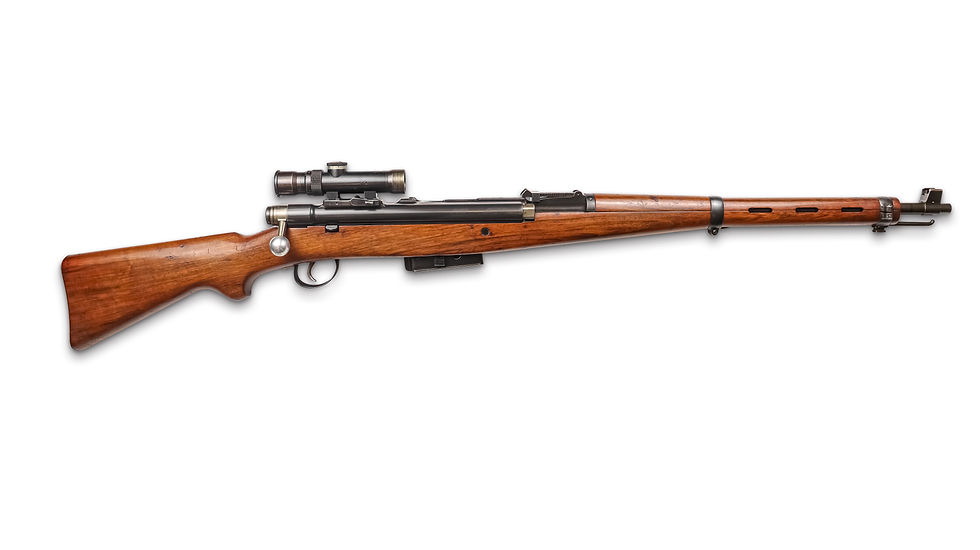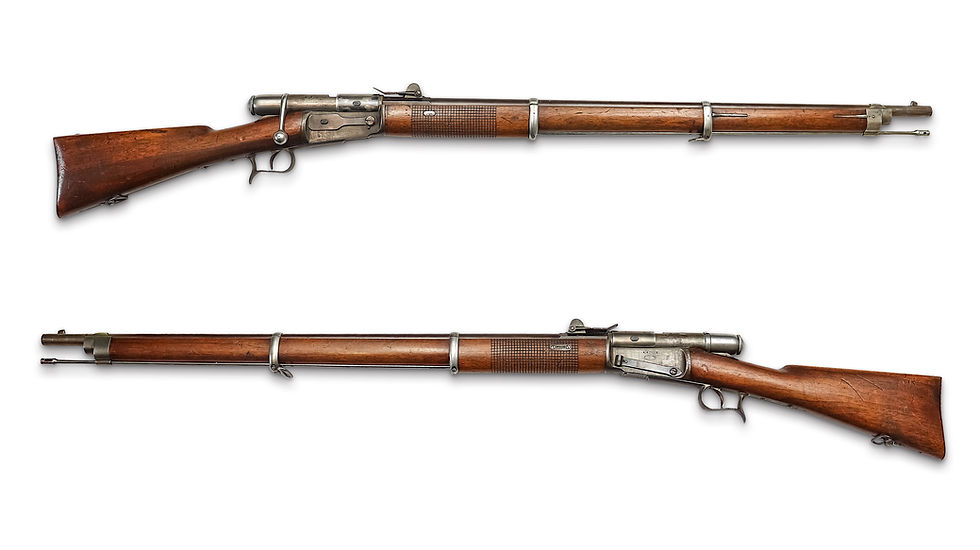Swiss Selbstladers
- Thomas Anderson

- Oct 1
- 3 min read
Switzerland is one of the few countries that has not adopted a semi-automatic rifle (Selbstlader in German). The Kar.31 rifle was replaced directly by the Stgw.57, marking an impressive transition from a bolt-action rifle to an assault rifle or “battle rifle” capable of semi-automatic or fully automatic fire. Nevertheless, it would be unwise to believe that SIG or the Waffenfabrik in Bern, and even some lesser-known Swiss gunsmiths, have never developed semi-automatic rifles. Quite the contrary.
The first notable development was the Mondragon rifle. Mexican General Mondragon, who specialized in artillery and was eager to equip his country's army with the best equipment possible, traveled to Europe and approached SIG to manufacture his inventions. The result was an impressive series of rifles dating from 1894 to 1908.

The first rifle designed by Mondragon and manufactured at SIG was the 1894 model. It was not a semi-automatic rifle as we understand it today. However, it had a firing mechanism that made it unique: it was straight-pull, like Swiss rifles, but if the fire selector was set to forward, the bolt could be operated back and forth to fire without needing to pull the trigger.
Shortly thereafter, in 1900, Mondragon developed its first semi-automatic rifle, which operated by gas impingement and a long piston attached to the moving assembly, typically like an RSC 1917 or an M1 Garand.


Three main models were derived from this design: the 1900, the transitional 1906, and the 1908. The 1900 and 1906 were also manufactured in long rifle and short carbine versions. These were mainly prototypes prior to the release of the 1908, which was officially adopted by the Mexican army, making it one of the first armies in the world to adopt a semi-automatic rifle. However, Mexico did not fulfill its order for some 4,000 Model 1908 rifles, and the weapons remained in SIG's stockpiles.

It wasn't until 1915 that the Mondragon M1908 regained interest, this time in the German Imperial Army. The Kaiser's army wasn't equipped with semi-automatic rifles, and German manufacturers offered almost none. The young German aviation industry was looking for solutions to equip airplane and zeppelin crews. At the start of the First World War, machine guns were too heavy to be mounted on aircraft, and the first aerial duels were fought with bolt-action rifles or, at best, with Lp08 “artillery Lugers,” the only semi-automatic weapon with a 20 cm barrel. As the best solution, Germany bought most of Mondragon's stock from SIG, as they were chambered in 7x57 Mauser. Some models were equipped with an imposing 30-round drum magazine. Officially, these Mondragon M1908s were named Fliegers Selbstlader Karabiner 1915 (FSK 15) and also differed in certain technical aspects.

But Germany wasn't the only country to use Mondragon 1908 rifles during World War I: Switzerland itself used less than a hundred for its air force. These Fliegergewehr 1917 rifles are easily recognizable by their straight 12-round magazines. Some models were equipped with a basket to collect the hot spent cartridge cases during firing in flight.

Despite this brief use of semi-automatic rifles (or automatic rifles, as they were known at the time) during the First World War, the Swiss army did not adopt weapons of this type. And yet SIG certainly had the expertise, as evidenced by the numerous prototypes developed in the 1920s. The Second World War was also a period of intense research and development, with some weapon models very similar to the Soviet SVT-40.

After 1945, the question arose as to whether a semi-automatic rifle should be adopted to replace the Kar.31. However, the arrival of the assault rifle changed everything and revolutionized individual infantry weaponry by offering a weapon that could fire single shots or bursts and had a high-capacity removable magazine, not to mention the intermediate cartridge. Weighing up the advantages and disadvantages of the Selbstlader and the Sturmgewehr, Switzerland took the plunge and adopted the Stgw, but with the 7.5x55 GP11 cartridge. Ultimately, the Mondragon M1917 can be considered the only strictly ordonnanz Selbstlader in the Swiss army.

All the history, variants, bayonets and accessories will be detailed in upcoming book:



Comments